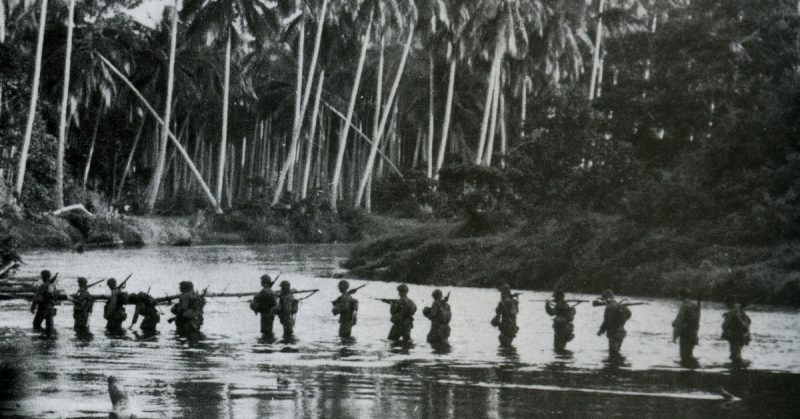The Guadalcanal campaign was one of the most dramatic military actions in US history. The Marines, in particular, made their name there at the start of America’s Pacific island-hopping during WWII.
The accounts from troops on the ground provide a picture of Guadalcanal being filled with the surreal and the mundane as well as the bold and heroic.
Not Such an Action Landing
For many of the men, landing on Guadalcanal was less exciting than they had anticipated.
Loaded onto landing craft, they waited while all the troops got into their boats. They had been crammed together for weeks on end. The thought of going into combat might not have been a relief, but at last, they were doing something. As they waited, rocking on the waves, the guns of the US Navy opened fire, filling the air with the smell of cordite and the roar of shellfire.
Eventually, the Marines headed for shore, one wave of landing craft after another. They clutched their weapons, ready to storm straight into action. Most of them had only recently signed up to fight for their country. It was their first experience of war. Were they ready?
However, the Japanese did not attack as they landed. Instead, the Americans unloaded peacefully onto the sands anticipating the order to move inland.
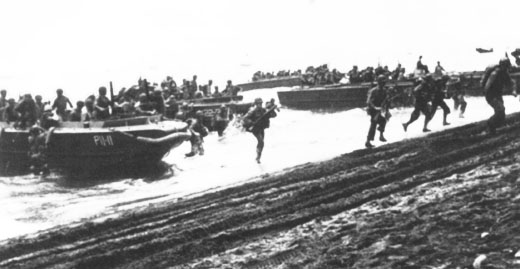
Jungle Life
The jungle shaped the experience of the troops on Guadalcanal.
There were upsides to it. Marines added coconut to their diet, due to the groves that grew along the coast. It was a welcome novelty.
But the jungle was mostly hard work. The Marines marched through densely grown terrain filled with steep ridges. They had to march because there was no other way. They trekked for miles through the heat and the undergrowth, many of them carrying heavy equipment such as machine-guns and parts for mortars.
Rain storms just after the invasion did not help. Rivers became swollen, and they had to wade through them.
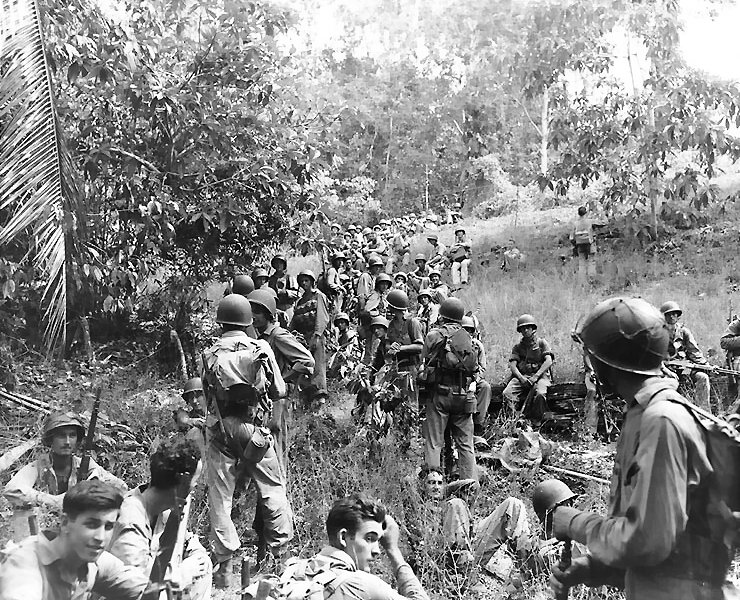
Confusion Reins
Inevitably, there was uncertainty and confusion. No military action ever runs smoothly.
On Guadalcanal, the terrain was part of the problem. The jungle restricted soldiers from seeing very far, and it was hard to find distinguishing landmarks. They could not tell the knoll they had been sent to occupy from any of the other high points rising from the jungle canopy. Units were marched into the jungle only to be ordered back to the beach.
The intelligence situation did not help either. Information about Guadalcanal was sparse before the landings, and the available maps were limited. The soldiers were heading into the unknown.
Tension added to the confusion. The soldiers knew the Japanese were out there somewhere but not where or when they would show themselves. In the dark of the night, sentries fired at non-existent targets, disturbing the sleep of the men around them. American units shot at each other, stopping only when passwords were finally exchanged.
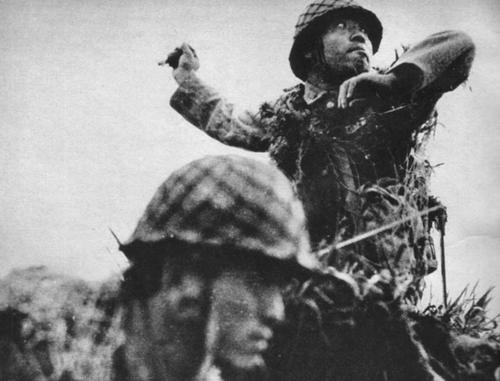
Supplies
At times, the lack of supplies was a problem. The ships providing provisions at the start of the campaign were driven off by the Japanese navy. They had unloaded half the supplies, leaving the troops short of food. The men only had five days of supplies and no more forthcoming. The capture of provisions at the Japanese airfield provided relief for some, while others foraged in the jungle.
On top of everything else, providing water took real effort. The heat of the jungle and the hard work of marching and fighting took it out of the soldiers. They needed lots of water to keep them hydrated. Carrying it to them was heavy work and not easily done when men were scattered throughout the jungle.
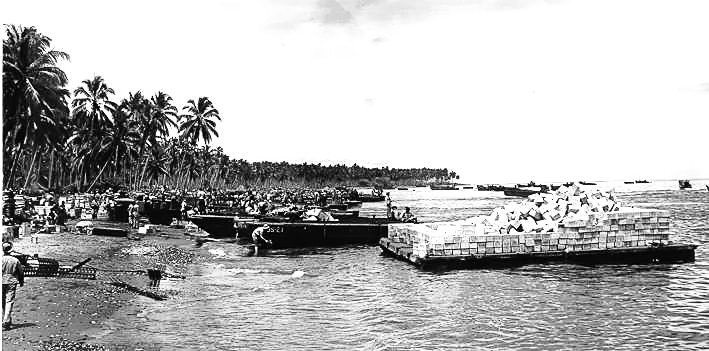
Death from Above
Early in the campaign, the Japanese dominated the skies and seas around Guadalcanal. Planes bombed and strafed the Americans. Warships sailing up and down the coast pounded them with heavy guns.
Gradually, the situation improved. Allied ships took on the Japanese Navy, ending the coastal bombardments. Planes arrived at the airbase, forming the Cactus Air Force, and engaged in fighting the Japanese in the air.
Death from above remained a constant peril. The sound of an airplane or the thud of heavy guns might have been a warning that something terrible was about to happen.
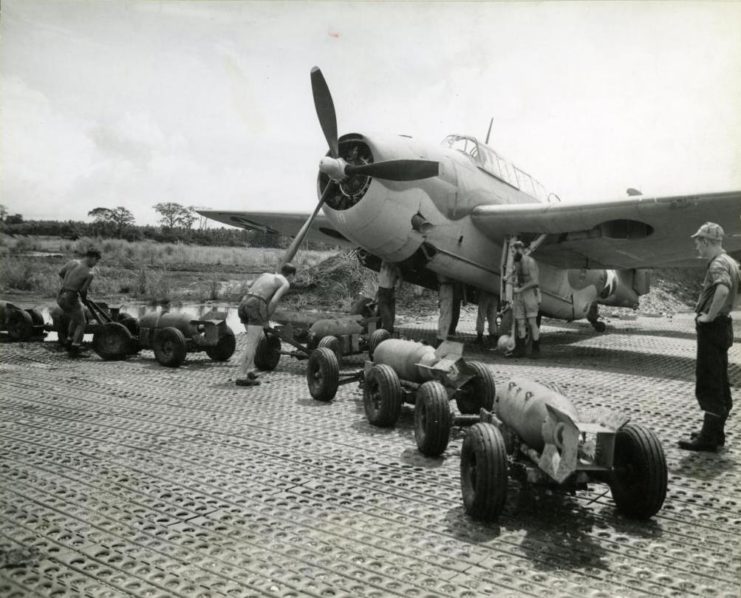
Night Fighting
Much of the fighting on Guadalcanal took place at night. Men remained on high alert, their sleep broken by the threat of imminent attack.
The Japanese were determined to drive the Americans from the island. From the Battle of Tenaru onward, they launched a series of intense, frenzied attacks against American positions.
It was the first real experience of war for many of the young soldiers. Their comrades and friends were blown apart by mortar shells and shredded by machine-guns. The Americans were usually successful in the firefights, but that did not stop the Japanese. They launched Banzai charges, flinging themselves at American positions. There was brutal hand to hand combat in which killing became frantic and immediate. They saw the fury of their attackers up close and personal.
Japanese military culture created an unexpected and unpleasant surprise for the Marines. Many Japanese soldiers were unwilling to be captured alive, even if they were wounded. When the Americans went among the fallen Japanese after an attack, they were shot at close range by severely injured men. American troops were killed as they went to help the wounded. To survive, the Marines had to become brutal, shooting bodies as they lay on the ground.
Guadalcanal was a grueling experience for the soldiers who went there. Through boredom, hard labor, supply shortages, and the constant threat of death they learned the reality of war.
Source:
Hugh Ambrose (2010), The Pacific
Nigel Cawthorne (2004), Turning the Tide: Decisive Battles of the Second World War
